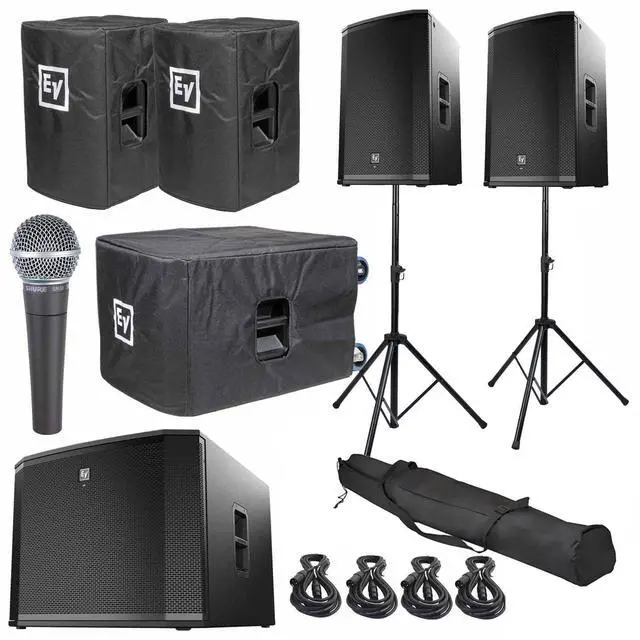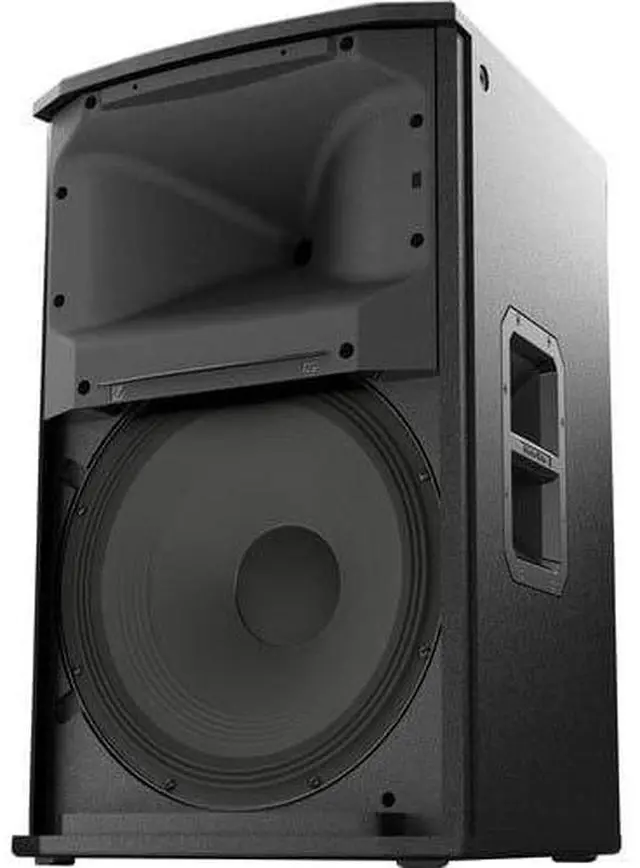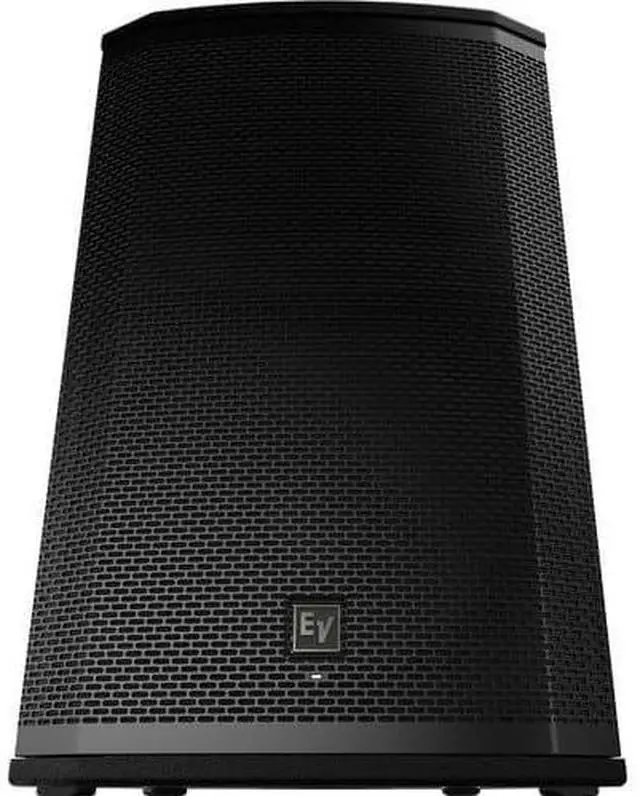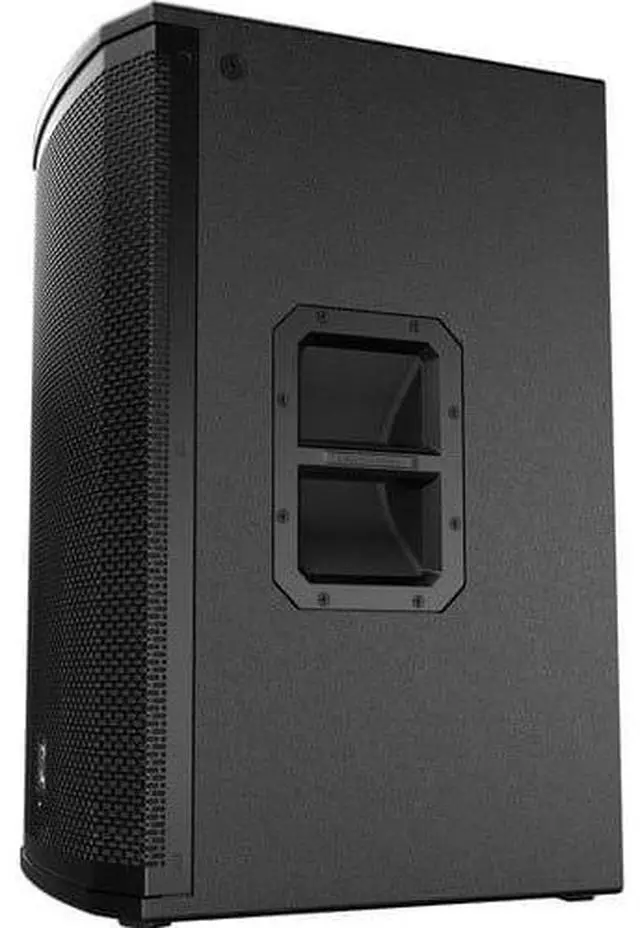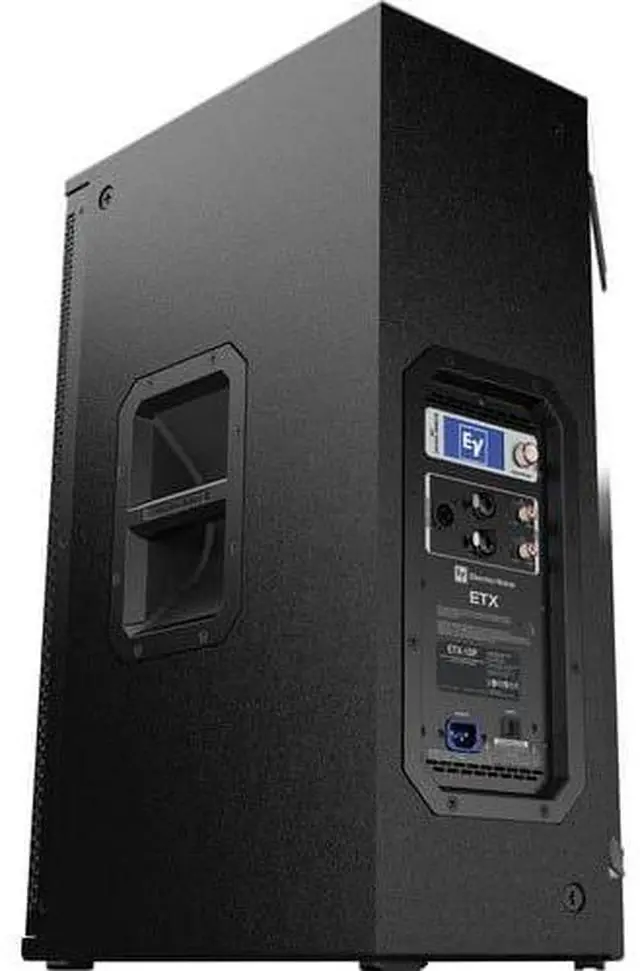The ETX-15P 15 Portable Powered Loudspeaker from Electro-Voice is a portable powered Class-D loudspeaker that can be used as a floor monitor, mounted on a tripod, or suspended from the ceiling. It is capable of up to 2, 000-watts of output for a peak SPL rating of up to 135 dB and features a 15-inch woofer and a 1.25 -inch titanium high-frequency driver. The speakers integrated DSP can be controlled via the rear panel LCD and provides EQ, boundary compensation, a limiting function, delay, and more.
Featuring Electro-Voices SST waveguide, the EXT-15P has a uniform beamwidth, allowing for even distribution of sound thanks to the time-alignment of the high and low-frequency transducers. Sturdy construction is provided in the form of the die-cast aluminum chassis, pole cup, and handles.
Signal Synchronized Transducers (SST) Waveguide Design
The waveguide is placed forward in the enclosure to help physically time-align the LF and HF transducers, minimizing the need for latency correction via DSP
Placing the port under the waveguide positions it in its ideal acoustic location in the enclosure without spacing the woofer and driver apart. The port location minimizes distortion and standing waves inside the loudspeaker
All waveguides are optimized using simulation software and proprietary algorithms for precise control and lowest distortion
High-Sensitivity, Low-Distortion Transducer Design
All ETX woofers use Faraday rings for better vocal reproduction
The woofers not only have high power handling but also feature a robust mechanical design to ensure long-term reliability
EV focuses on engineering transducers with linear frequency response, minimizing the need for additional equalization
Components and Testing
All ETX components are designed from the ground up by Electro-Voice. No off-the-shelf components are used
The handles, pole cups and amplifier chassis are die-cast aluminum, not plastic
18mm, 13-ply birch plywood with EVCoat is used throughout the ETX product line
In addition to industry-standard pink noise abuse tests, all models must survive EVs proprietary 1, 000-hour torture test that uses real-world signals driven beyond full output
